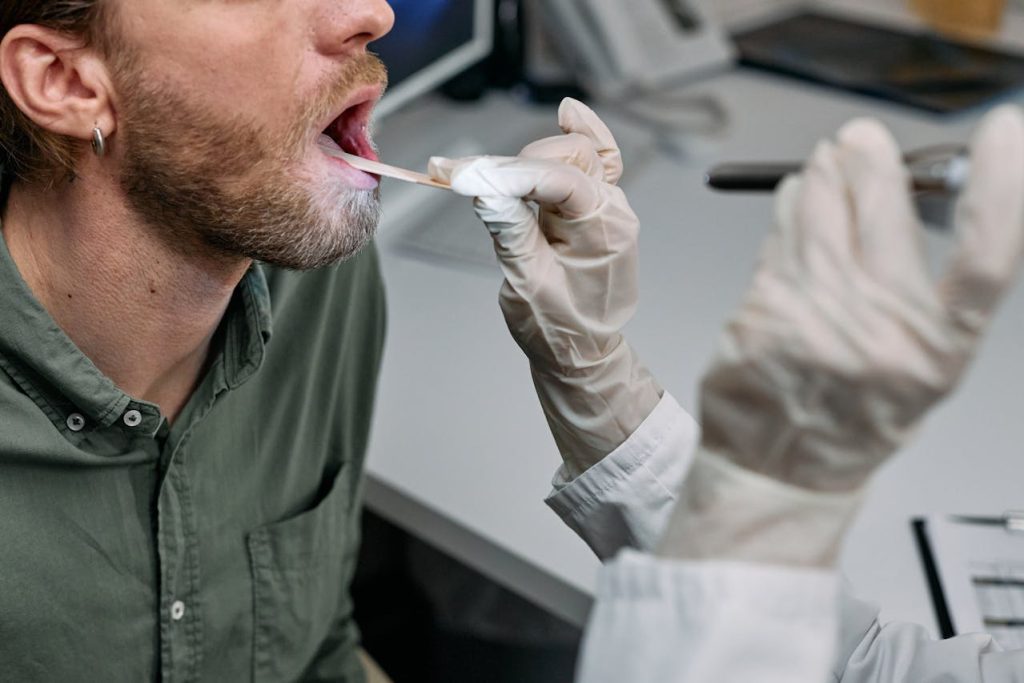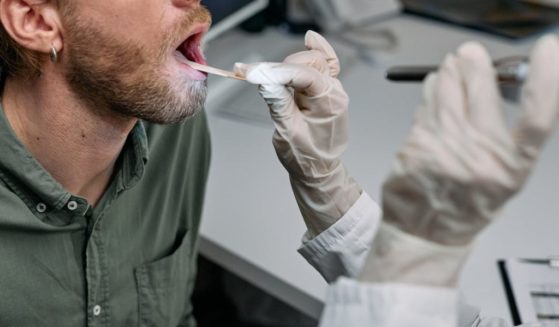Breakthrough Non-Invasive Test For Oral Cancer Unveiled By Researchers

A new cheap, non-invasive test for oral cancer which could potentially save millions of lives has been developed.
The ultra-quick tests involve a scoring system linked to the levels of two proteins in cells taken from patients’ suspicious oral lesions.
The new low-cost method could prove invaluable in detecting oral cancer, monitoring precancerous lesions and determining whether a biopsy is warranted – and could return results within half an hour.
Oral cancers kill an estimated 350,000 people across the globe each year – and are especially prevalent in developing countries.

Researchers from the School of Dental Medicine at Ohio’s Case Western Reserve University (CWRU) therefore hope their newly developed tests could help combat the deadly growths.
Oral cancers and precancerous mouth lesions are considered by medical professionals to be especially difficult to diagnose early and accurately.
Biopsies are expensive, invasive and stressful for patients and can often lead to complications.
These biopsies are also not feasible if repeated screenings of the same lesion are required.
However, a new study published in the journal Cell Reports Medicine details the discovery of a noninvasive, low-cost method of detecting oral cancer, monitoring precancerous lesions and determining when a biopsy is warranted.
The tests amount to a scoring system linked to the levels of two proteins in cells brushed from suspicious oral lesions of patients either at dental clinics or at the ear, nose and throat (ENT) departments of hospitals.
One of the proteins – called human beta defensin 3, or hBD-3 – is expressed at high levels in the early stages of oral cancer, whilst the second protein, hBD-2, is low or unchanged.
The ratio of hBD-3 to hBD-2 in the lesion site – over the ratio of the two proteins on the opposite, normal site – generates a score called the beta defensin index (BDI).

A BDI score above a certain threshold implies cancer, whilst anything below that threshold does not.
Determining the levels of the proteins and quantifying the BDI is done routinely in a lab.
The BDI was independently validated using identical protocols at CWRU’s University Hospital, the University of Cincinnati Medical Center and the West Virginia University School of Dentistry.
Lead researcher Dr. Aaron Weinberg, chair of the Department of Biological Sciences at the CWRU’s School of Dental Medicine, explained that the team had originally believed the hBD-3 protein to be positive, before delving deeper with their experiments.
“When we first discovered hBD-3, we saw it acted as a “good guy,” involved in wound-healing and killing microbes,” Dr. Weinberg said.
“When we found it was regulated the same way certain cells grow uncontrollably, we started studying hBD-3 in the context of oral cancer.
“Imagine our surprise when this Dr. Jekyll turned out to be Mr. Hyde.
“We found it was not only promoting tumor growth but was overexpressed in the early stages of the disease, while another member, hBD-2, wasn’t changing.
“This difference in levels of expression of the two proteins compared to the opposite side in the same patient led us to examine the BDI’s ability to distinguish cancer from benign lesions.”
Head and neck cancer (HNC) – of which oral cancer accounts for around 90 percent – is the seventh most prevalent malignancy in the world, and developing countries are currently witnessing a rise in its incidence.
HNC makes up about five percent of all cancers worldwide and three percent of all malignancies in the United States, according to the National Institute of Health.
There are estimated to be around 640,000 cases of HNC per year, resulting in as many as 350,000 deaths worldwide – mainly in socioeconomically disadvantaged populations and underserved communities.
The researchers say their now-patented lab-based approach could reduce biopsies in primary care clinics by as much as 95 percent, due to its ability to inform clinicians which patients actually need a biopsy, Dr. Weinberg said.
The test can also be exported for use in developing countries where oral cancer is rampant and pathology services are questionable or lacking.
The data from the research team’s lab-based approach has also inspired the development of a point-of-care (POC) device in collaboration with Umut Gurkan, the Wilbert J. Austin Professor of Engineering at the Case School of Engineering.
The POC diagnostic approach measures patients’ protein ratio and could be used directly in a clinic, providing results within a mere half an hour.
A patent for the POC device is currently pending, which could lead to its manufacturing and clinical validation.
Produced in association with SWNS Talker
The Western Journal has not reviewed this story prior to publication. Therefore, it may not meet our normal editorial standards. It is provided to our readers as a service from The Western Journal.
Truth and Accuracy
We are committed to truth and accuracy in all of our journalism. Read our editorial standards.











